Hi everyone, I hope you all had a wonderful weekend! As our weekend slowly comes to an end, I wanted to give you a short update what we were up to. We truly had a great time exploring some cultural aspects of our new home. Professor Notsu (Niklas boss) and his colleague Professor Kimura have organized some activities for the international guests of the working group at the mathematical department. In addition to Niklas, there are some international researcher visiting the team for the workshop that takes place next week. They come frome various places like Brazil, Poland, UK, Czech Republic and Korea. Most of them will only stay for one month, however both Professors wanted to make sure that they can get a lot of insights during their stay.
And that’s how we found ourselves in the rooms of Moriachi for a special workshop: there we learned how to make a traditional Japanese-style confection called Rakugan. Rakugan mainly consist of sugar, mixed with rice flakes. You produce these special food with traditional wooden molds that are designed in every possible shape you can imagine. In the small museum next to the workshop we were able to see lots of different molds - from very tiny and delicate ones up to huge molds that will produce large animals such as fish (often used for the expression of good luck).
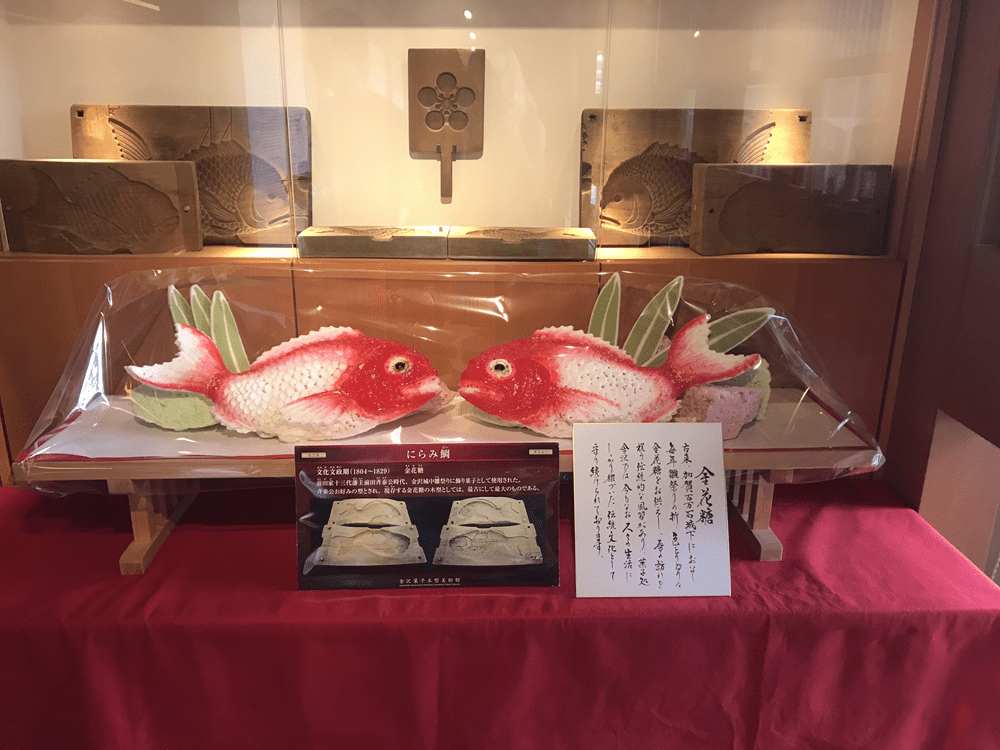 A huge fish Rakugan - usually produced for big parties and a symbol for wishing luck
A huge fish Rakugan - usually produced for big parties and a symbol for wishing luck
The production itself follows strict rules. First, you have to work on the sugar rice flake mix (push it around with a wooden brick) to make it sticky, than you press the powder into the molds, press the wood together and at the end, you try to carefully extract your sugary structures that they don’t break. After repeating this process two or three times, we had produced enough for the final stage of the workshop: drinking macha tea. As this tea is extremely bitter, the sweet taste of the Rakugan is helping a bit to deal with it. It was truly an interesting experience and you could get a good feeling of how delicate the production of such elaborate sweets can be.
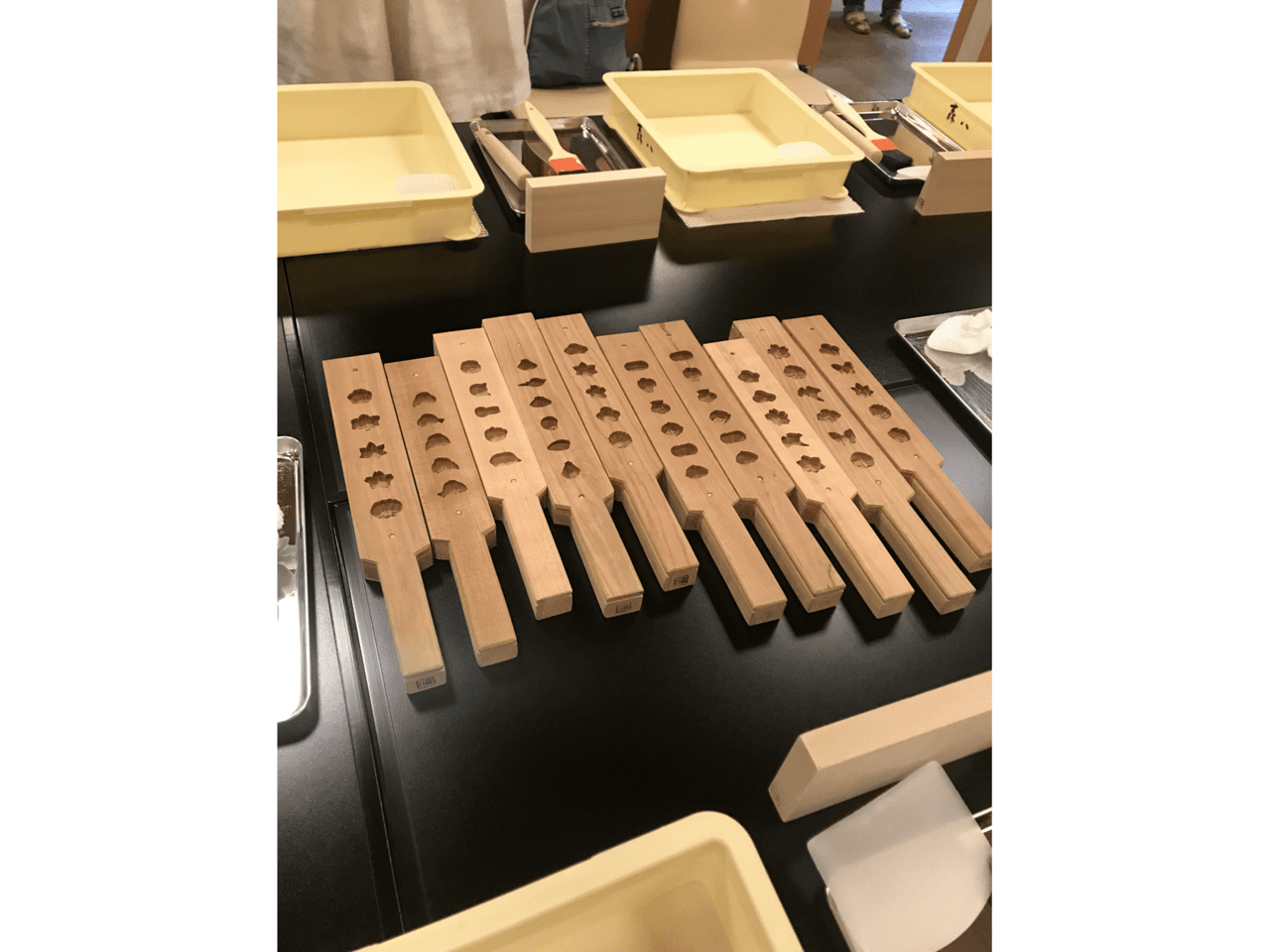 Wooden molds that are used for the production. The sugary mass is pressed in the holes.
Wooden molds that are used for the production. The sugary mass is pressed in the holes.
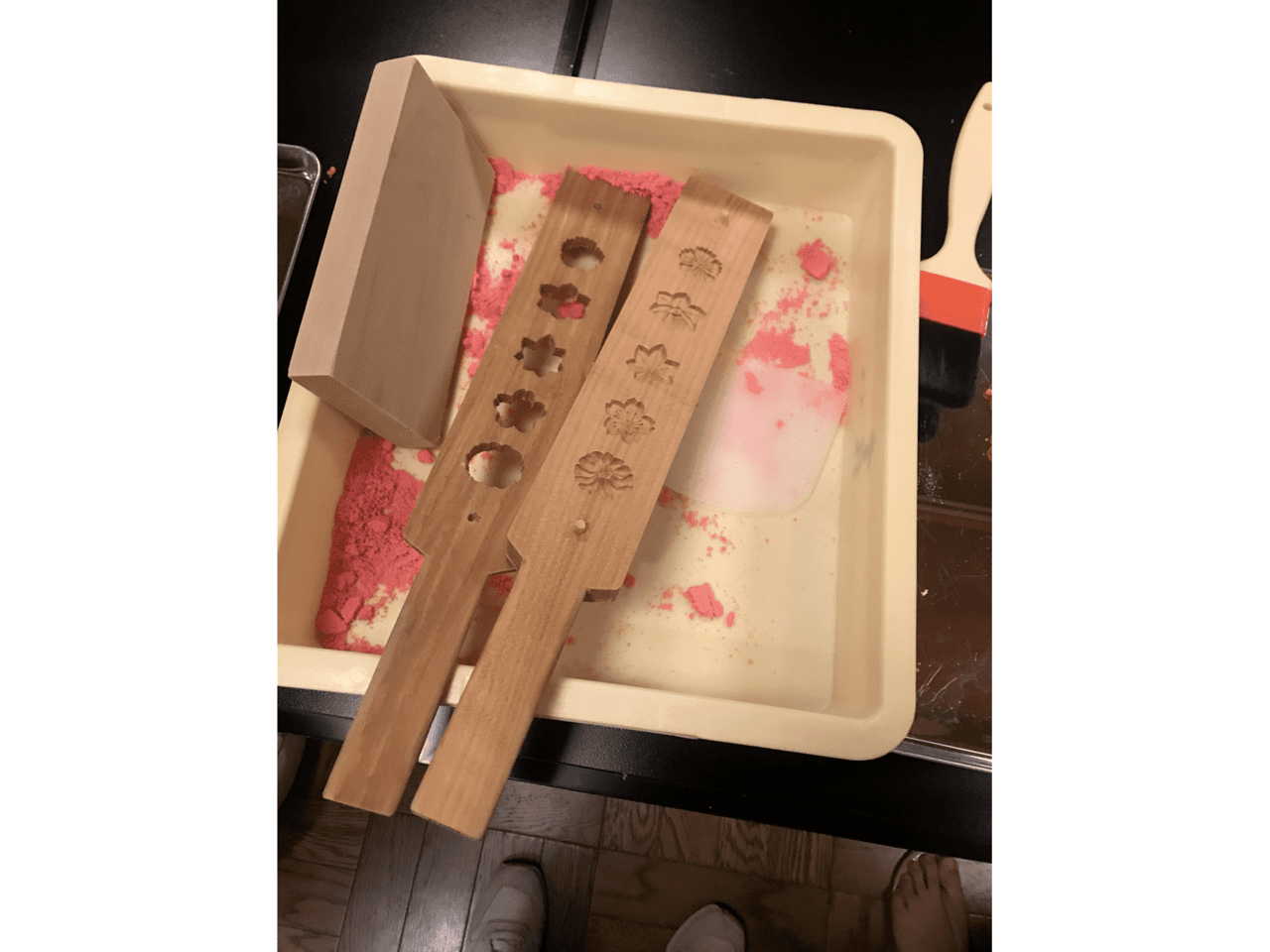 Our tools for the production: a bowl containing the sugar flakes (mine were pink :D), the molds and the wooden brick for preparing the sugar.
Our tools for the production: a bowl containing the sugar flakes (mine were pink :D), the molds and the wooden brick for preparing the sugar.
 Hard working Germans
Hard working Germans
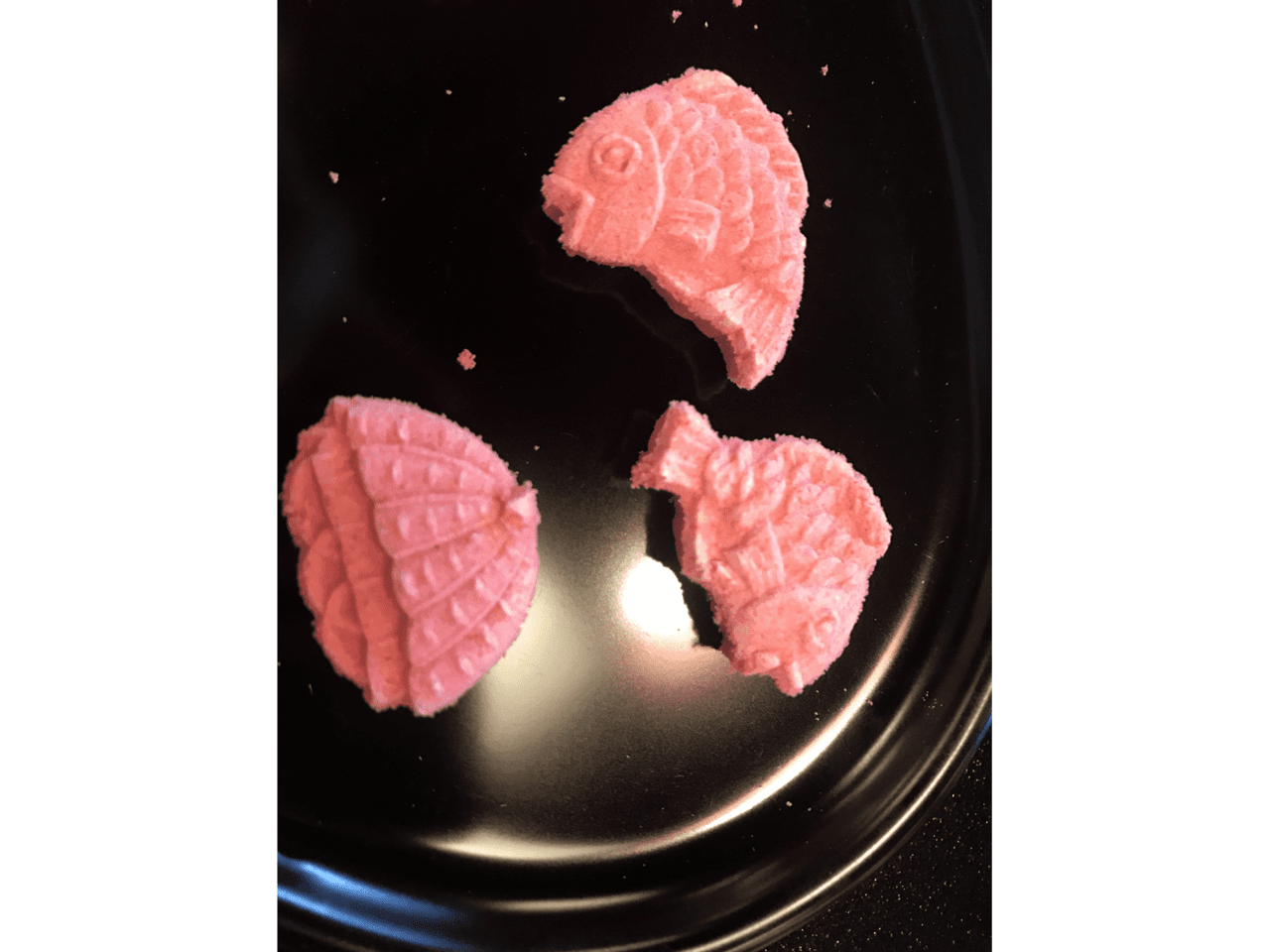 My first Rakugan - I chose the molds that consisted of little kois and I was really proud that they didnt fall apart after freeing them from the mold. :)
My first Rakugan - I chose the molds that consisted of little kois and I was really proud that they didnt fall apart after freeing them from the mold. :)
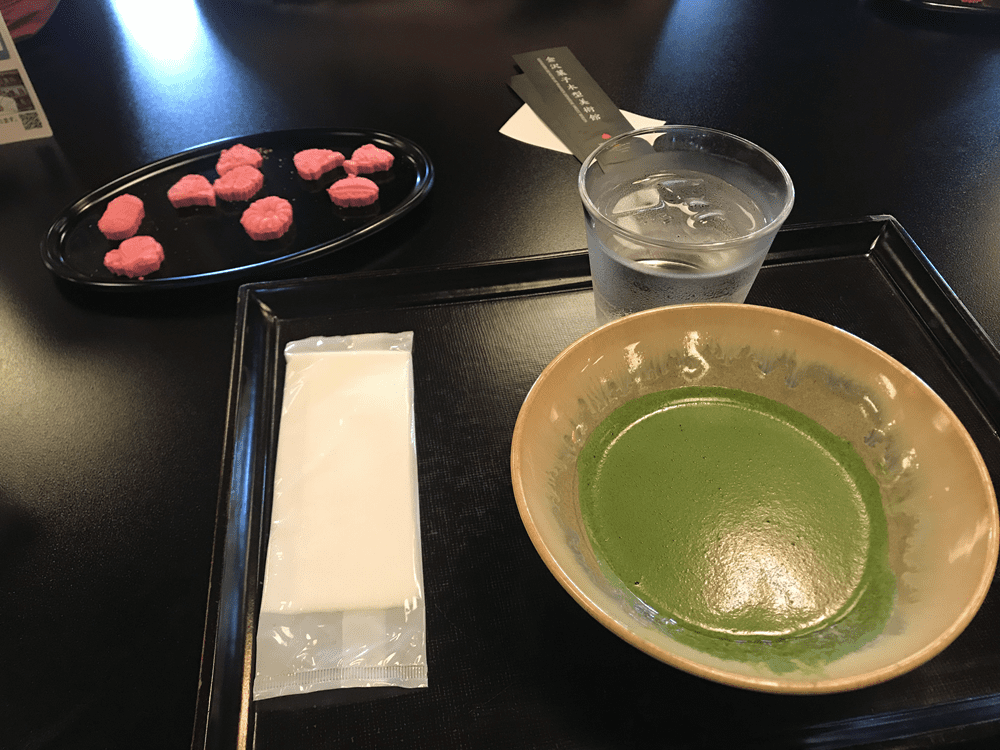 After the hard work comes the time to relax and enjoy the combination of bitter and sweet
After the hard work comes the time to relax and enjoy the combination of bitter and sweet
After this workshop we went to the next stop: the Unesco world heritage village of Gokayama in the province of Toyama. The village is located in the mountains of the central island in a narrow valley and about one hour drive away from Kanazawa. Driving through these mountains was an amazing experience. Everything is so green! I have never seen such a dense and green vegetation before and I will never forget this sight. It was very impressive. Sadly, I don’t know how all the plants are called and I only recognize some of them, so I can’t tell you anything about it.

Entering the heritage site was also impressive. The buildings of this village are dated way back to the Edo period (17th century) and haven’t changed since. Most of the houses are 300 years old! The style is unique: the roof is quite steep, a style that is called gassho-zukuri style. It was very common during the Edo period but very difficult to construct. It took everyone from the whole village to build one house. Today, there are still people living in these houses and trying to maintain old tradition and cultural customs (e.g. the music, the festivities, the stories, etc.).
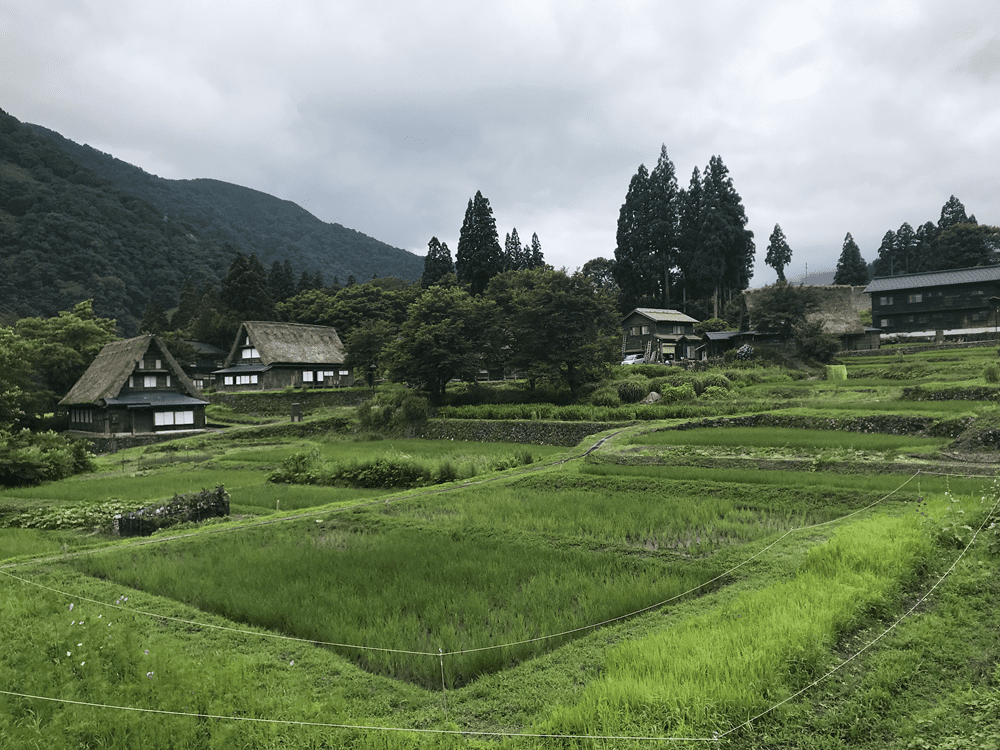 Rice filed and spcial houses
Rice filed and spcial houses
After a short lunch with the group at a small restaurant (we had Tempura Udon/Soba, which was very delicious) we were able to explore the village and walk around.
 My lunch
My lunch
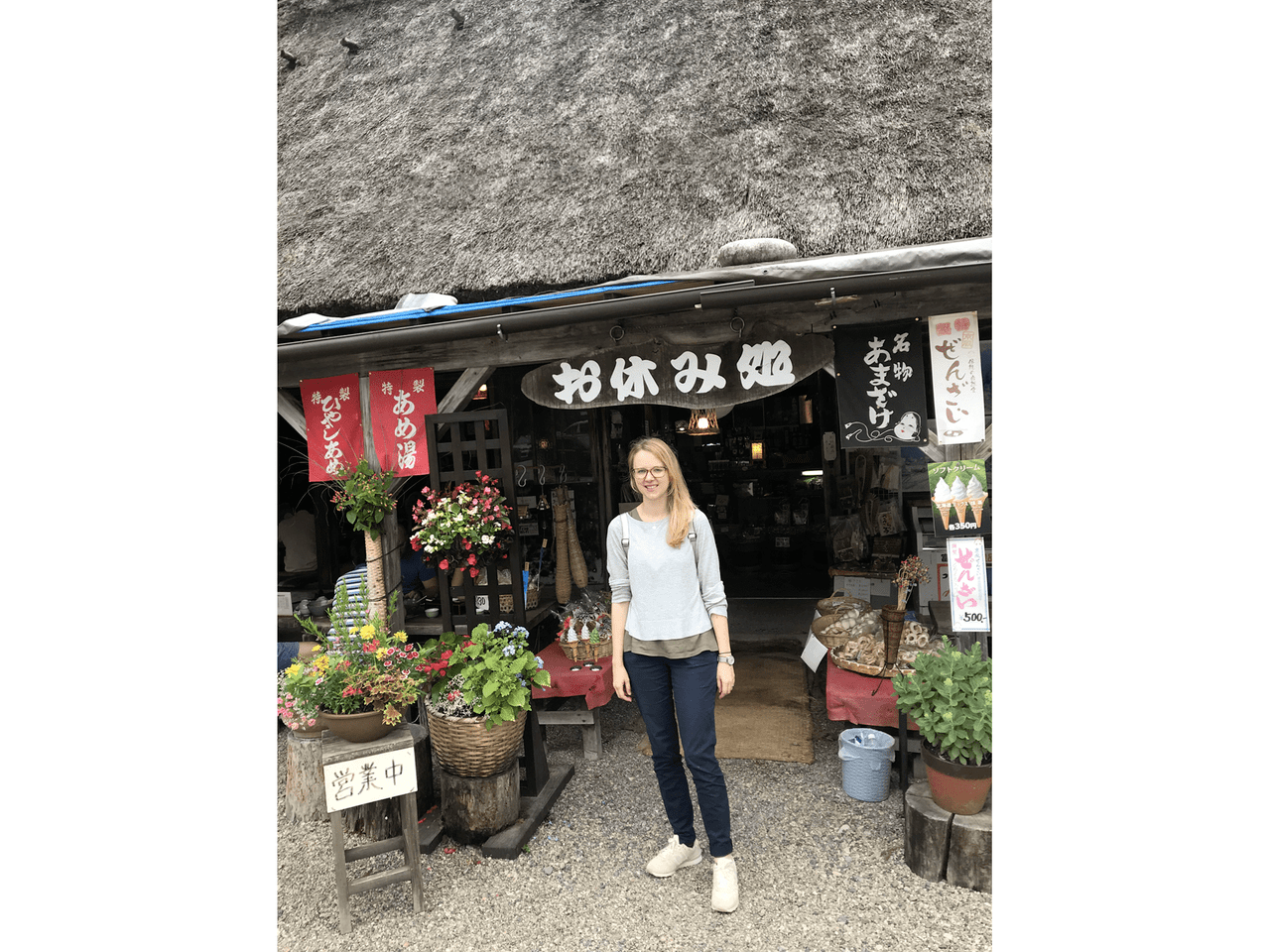 Such a cute restaurant and a wonderful host!
Such a cute restaurant and a wonderful host!
We visited two small museums where we learned about the life in this village and about their famous products like the Washi Paper (traditional Japanese paper), gunpowder or musical instruments. For me it was the first contact with a more traditional part of Japan and I was very moved by this place. The village lies high up in the mountain, quite isolated from larger cities - I really cannot imagine how hard it must have been to live there. In winter, there is a lot of snow and in summer it rains a lot. And still, the people kept their traditions and their culture alive and kept everything in shape. I was very impressed and enjoyed the trip so much.
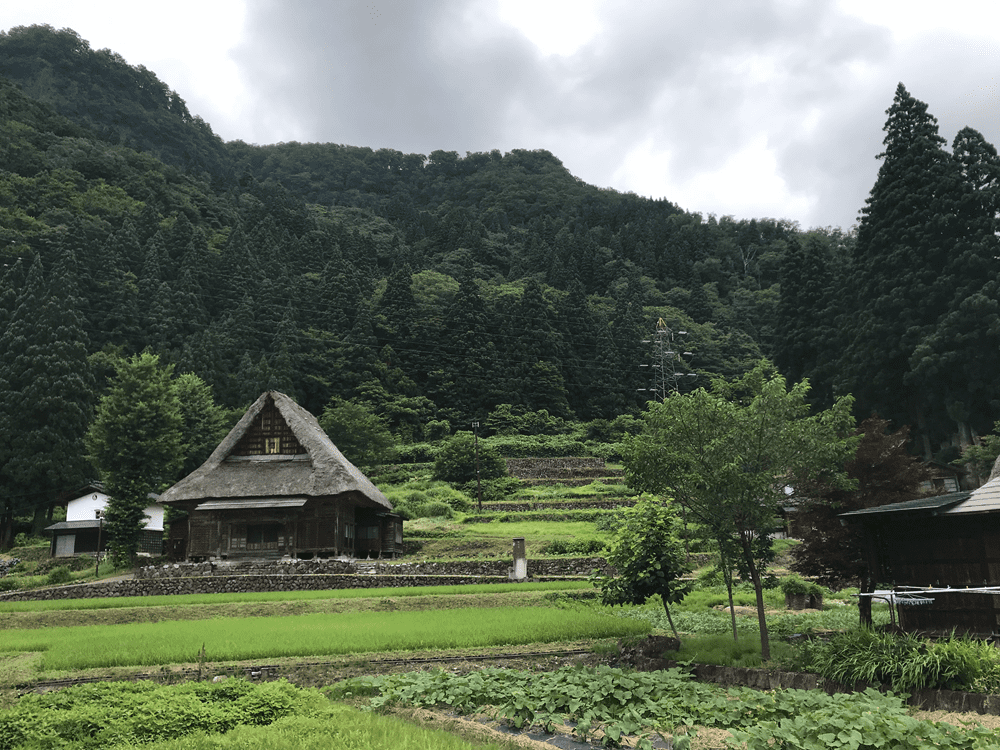
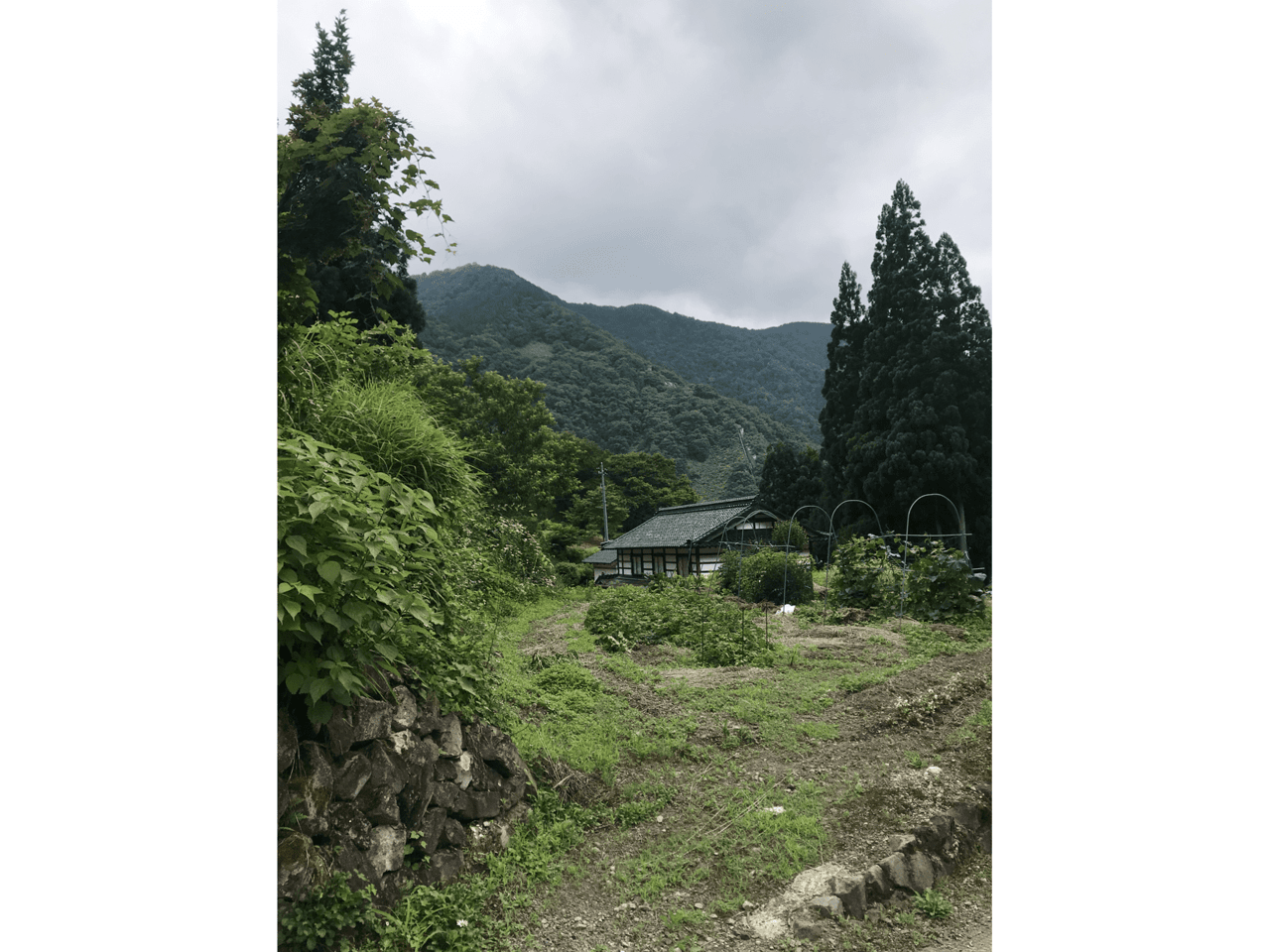
 Inside of a typical house - very narrow for European persons
Inside of a typical house - very narrow for European persons
In the evening we all met again for dinner at a Korean Barbecue Restaurant in Kanazawa. It was brilliant, we grilled a lot of fish and meat, had some wine and beer and a truly great time with the other guests and our brilliant hosts! It was such a nice group and a perfect end for a perfect day. We are both so happy that we could take part in this.
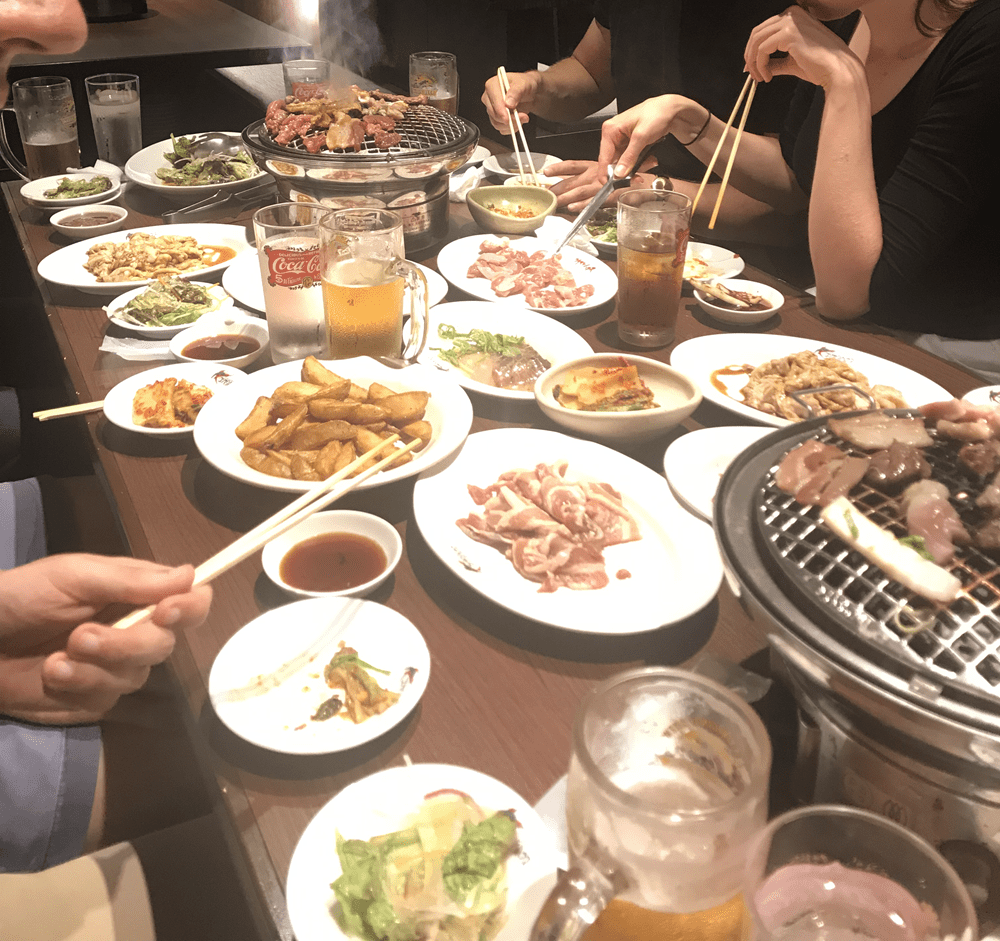
Oh and by the way, going home by bus in the evening was quite a challenge as the bus was so crowded and we had to squeeze ourselves into it somehow. I really do not want to repeat this experience so fast…
Our Sunday was a little bit more quiet. As it was raining a lot, we walked around a bit and had some coffee, but that’s it. We were tired from the trip and not very motivated due to the weather. Niklas is busy preparing his talk for the workshop and I studied a little bit Japanese and tried to rest. We had been very active the last days and did not really rest enough so I tried to make good use of the bad weather and relaxed.
And, by accident I learned that wild bears live in the woods directly behind our district! I actually wanted to take a long walk and explore the area (it is described as park with a great viewpoint) but the roads were closed due to a bear that has been spotted several times. :O And then I learned that there are even monkeys living in the trees. I hope to see them one day while I really wish that I won’t see the bear at all.
Every-day-life stories
As many of you told me, little stories about the Japanese every-day-life are interesting for you. Therefore, I thought about integrating such information in a separate part of every blog post from now on. This time, I want to tell you more about waste or trash. Now, I guess that you guys wonder why the hell I want to talk about this. But, believe me or not, dealing with trash in Japan is not as easy as it seems.
For Japanese people, cleanliness is very important. There are a lot of rules when it comes to the correct behavior in conjunction with cleanliness. For example, it is not allowed to enter a home with your outdoor footwear as the dirt from the outside should not get into your house. Usually you will get some indoor slippers to move around a house. Even in restaurants it is common that you take of your shoes at the entry and either walk around in socks or use some slippers. In rooms where the floor consists of tatami mats, you are not allowed to wear any shoes and must take of the indoor slippers at the doorstep. The classroom of my Japanese course is in such a room and there I learned this rule really fast (of course by doing it wrong as I simply forgot it and therefore received a little warning from the teacher).
When you walk around in a city you will notice something really fast: there are literally no trash cans. Nowhere. So, knowing that trash and dirt is not welcome in Japan you expect that there should be lots of possibilities to get rid of your waste. But, nope. Zero. I have been walking around with some junk like a banana peel for several hours because I simply couldn’t find a trash can! And that can make you very desperate. The only exception are vending machines. You can find vending machines in nearly every street. Next to them, there are small trash cans but only for the plastic bottles! Nothing else. After this experience, I only leave the house with a small plastic bag that I can use for storing my trash until I get home and can get rid of it. I really would not advise you to get rid of it in any other way! I really don’t know why there are so few possibilities in public places to get rid of your waste. Knowing that the aspect of cleanliness is so important, this just doesn’t make sense for me. However, you have to deal with it and be prepared. And if you do happen to come across to a trash can - never forget where you found it, it will be very useful for you to know where it is in the upcoming days. ;-)
Also, waste separation is slightly different from Germany. When we moved into the apartment, we received a very informative and detailed brochure about the correct way to separate your waste. You are not allowed to throw waste away in other bags than the ‘Kanazawa designated garbage bag’ (which you can buy in every Conbini store). In these bags, you only put combustible trash like food waste or paper (contrary from Germany where you separate the paper from your waste). Plastic is stored separately, as are plastic bottles and cans (e.g. beer cans). Bigger trash like old furniture etc. must be registered at the city hall. And electronic trash (e.g. old microwave etc) can only be collected by a special service of the manufacturing company (which will cost you a fortune, by the way). The trash is not collected very often and you are not allowed to put the trash out days before the due date. We missed the date for the collection of plastic and now we have to wait two weeks until we can try it again… Too bad.
The next week will be very busy for both of us: Niklas is attending his workshop and I will meet a lot of people, e.g. a new tandem partner and two German Professors of the university. At the end of the week we will get our first visitors in Kanazawa: Marco, Laura and Mia will join us for some days and we are so excited to meet them. Stay tuned for more and in the meantime, follow us on Instagram for more pictures in between. ;-)
